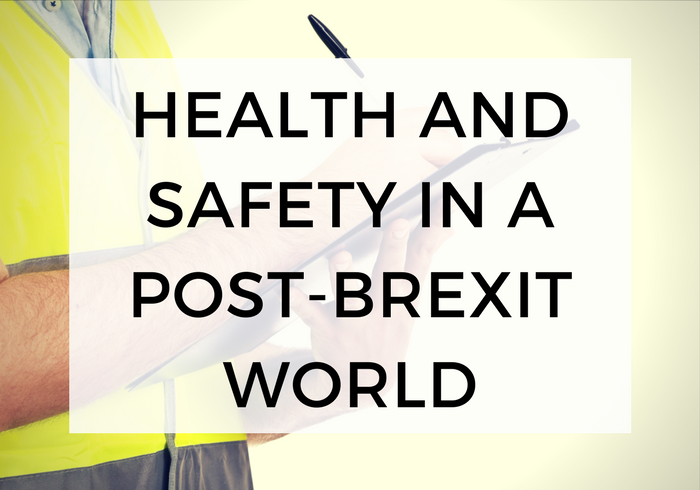Insights
To an extent, the referendum on the UK’s membership of the European Union has made experts of us all. Article 50 of the Lisbon Treaty was thrust into the limelight, the subject of intense speculation as to when this previously arcane piece of legalese might be “triggered”.
The sixty-four-thousand-dollar question is – what would happen after the UK has notified the European Council of its intention to withdraw? It’s a question which has been mulled over by many people, not least those with an interest in the development and implementation of health and safety legislation.
To take any steps (however tentative) toward answering this question, it’s first necessary to consider the impact that the EU has had on health and safety in this country (here comes the science).
Going back a few decades, the adoption of the Single European Act 1986 (SEA) gave new impetus to the occupational health and safety measures taken by the then European Economic Community (EEC). The Act introduced new Articles into the Treaty of Rome which meant that health and safety at work was dealt with in an operational provision of an EEC Treaty.
Moving forward, Article 153 of the Treaty on the Functioning of the European Union (TFEU) is where the improvement of working conditions is currently enshrined. EU Directives made under Article 153 are intended to cover areas such as:
- Improvement in the working environment to protect workers’ health and safety;
- Working conditions;
- Social security and social protection of workers;
- Protection of workers where their employment contract is terminated;
- The information and consultation of workers;
- The integration of persons excluded from the labour market; and
- Equality between men and women with regard to the labour market and opportunities and treatment at work.
Directives have been used to introduce health and safety law within the EU, so what effect do such Directives have on the UK? Directives themselves do not apply directly to EU member states (in that they indicate the required results but leave the detail to the individual countries), they only take effect when they are embodied in national legislation.
Once a new European Directive is introduced, member states have a period of time, usually between 18 months and 3 years, to incorporate the key elements of the Directive into national law (allowing for local national variations within the scope of the Directive).
In the event that the UK leaves the EU, the obligations to enact Directives will (in theory) cease to be binding. However, the health and safety legislation already passed by the UK Parliament to enact the Directives will still be in force. The post-Brexit difference being that the government of the day could amend legislation according to its own agenda (allowing for Parliamentary majority, subsequent Treaties etc.), without being bound by the terms of Directives. It then becomes a question of how politically acceptable (and practical) it would be to modify the legislative framework, and whether there will be any terms in trade agreements or Treaties yet to be reached (negotiations to be completed within two years of invoking Article 50), which may have relevance. For example, Norway isn’t a member of the EU but it needs to transpose certain Directives into its domestic law, including the provisions of the Working Time Directive.
Also worth considering are European Regulations. Unlike Directives, they are fully binding on member states and require no national measures for implementation. They have been used significantly less often than Directives, but examples of European Regulations relevant to health and safety are the Registration Evaluation and Authorisation of Chemicals Regulations (REACH) and the Classification, Labelling and Packaging (CLP) Regulations. In the event that the UK leaves the EU, it must be seen as likely that domestic legislation would need to be enacted to reflect the provisions of these particular EU laws.
In summary then, here are a few key facts:
- Health and safety legislation which implements EU Directives will still be in force (until such time as it is either amended or repealed);
- Future governments will be able to change the health and safety legal framework within the terms of any future trade agreements/Treaties (as well as the usual rules of Parliament);
- Further legislation is likely to be needed to replace directly applicable EU Regulations.
So, after all of this, are we actually any closer to answering that sixty-four-thousand-dollar question? Probably not. However, whatever the future holds, it certainly helps to have some understanding of the processes involved – along with a handful of facts. Whether something is good or bad depends upon the perspective of the individual, but maintaining a robust health and safety system makes sound business sense; as well helping to ensure that everyone goes home in one piece.
Written by Andrew Regel, H, S & E Training Technical Lead






